How to attract butterflies – expert advice on making a butterfly garden
Learning how to attract butterflies – and other pollinators – to your garden is a must. This is how to create a butterfly garden that's beautiful, too
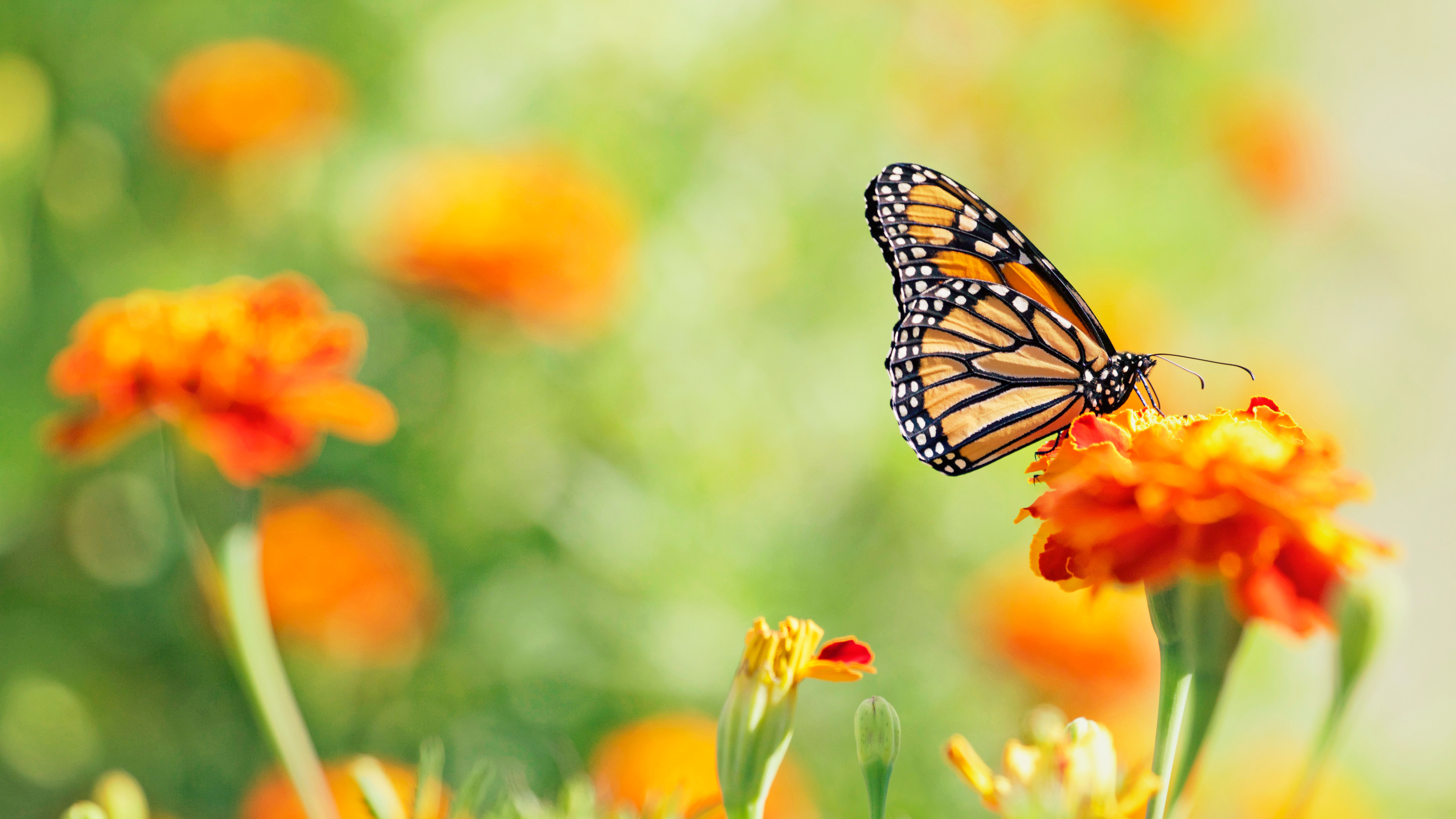

Holly Reaney
Knowing how to attract butterflies to your yard is one of the most important changes you can make to your garden. Considered a key indicator of a healthy environment, three-quarters of butterfly species are in decline and four species have already gone extinct, therefore it is clear there is much to be done.
Cultivate a butterfly-friendly space with nectar-rich colorful flowers and wildlife garden ideas, and you will be able to enjoy spotting the likes of a Red Admiral, Peacock, Painted lady, Comma, Brimstone, Gatekeepper and Small Tortoiseshell butterflies dancing between the blooms.
There is no doubt that gardeners have an important role to play in supplementing nature by improving gardens so they are more supportive to valuable pollinators, including butterflies, bees, moths, wasps, hoverflies, beetles and many others.
How to attract butterflies
Our gardens are important corridors between natural habitats; a diverse, nectar-rich café allows butterflies and other insects to flit from flower to flower, pollinating and enabling seeds and fruit production.
Butterflies, once on the wing, cover larger areas than bees and get almost all of their food from nectar. Pollen sticks to their bodies as they feed, so that they pass it from flower to flower, pollinating the plants, but unlike bees, they don't eat pollen.
'A good pollinator garden needs to work a bit like a good supermarket – well stocked whenever you visit and with something for everyone,' says Helen Bostock, senior horticultural advisor at the RHS.
Knowing how to attract butterflies can make a big difference in the health of your garden. 'Anyone with a good range of flowering plants in their gardens is probably already doing pretty well at catering for pollinators, but we can make it even better by planning our planting scheme so there is something in flower in any given month,' she adds.
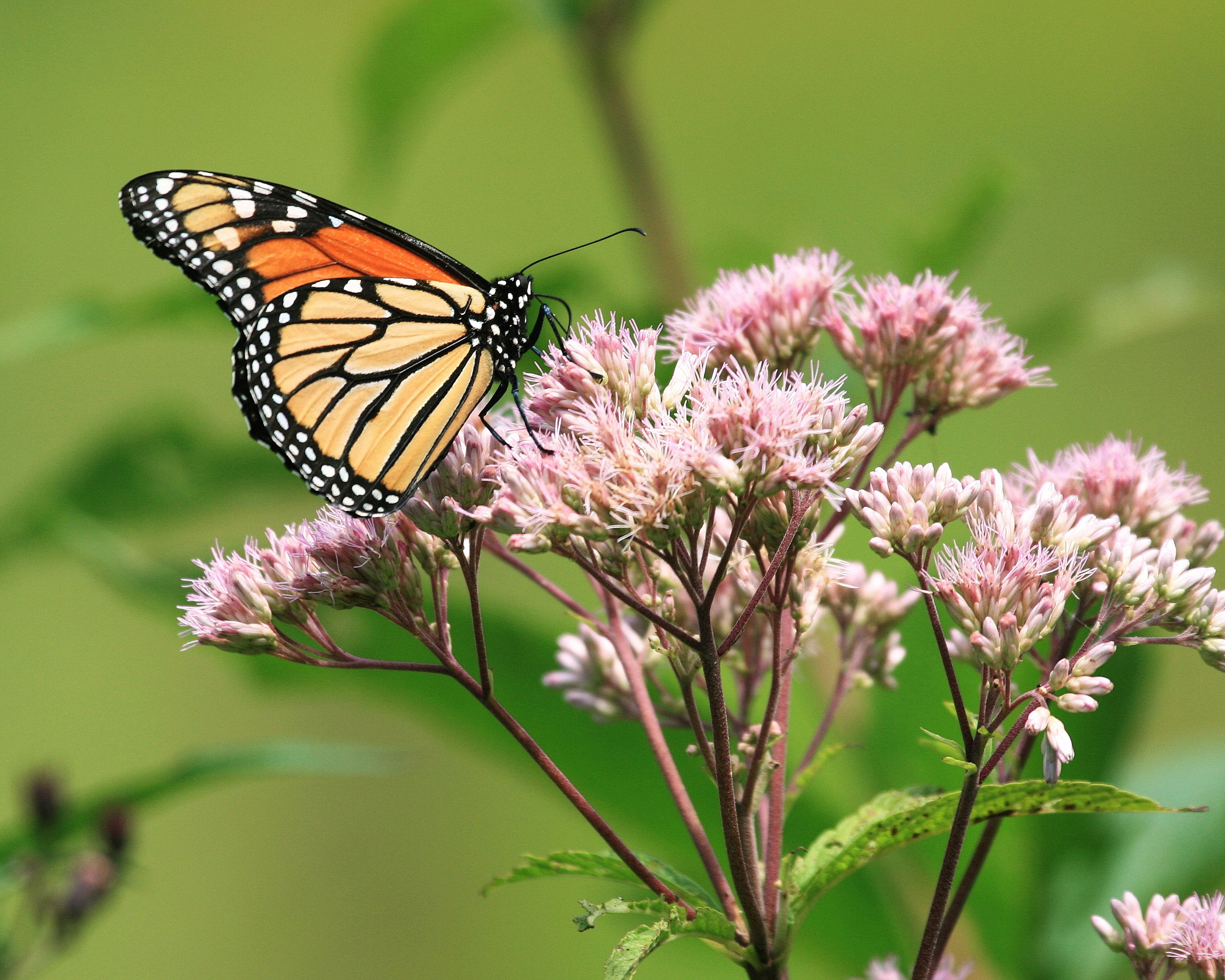
Add a butterfly house
We're all familiar with the bug hotel and have seen plenty of bird box ideas, however, you might be less familiar with the butterfly box. This box is a great and easy way to learn how to attract butterflies to your garden. The butterfly box is similar to a traditional bird box in that it is a similar size and enclosed on all sides save for the entry and exit point. However, butterfly boxes have narrow slits in the front rather than a hole, supposedly to replicate the splits in a tree's bark. These slits help to protect the butterflies from predators and inclement weather.
'Butterfly houses are essential for providing butterflies with somewhere safe to shelter, rest and hibernate,' says Sarah Hancocks, projects manager at Vivara.
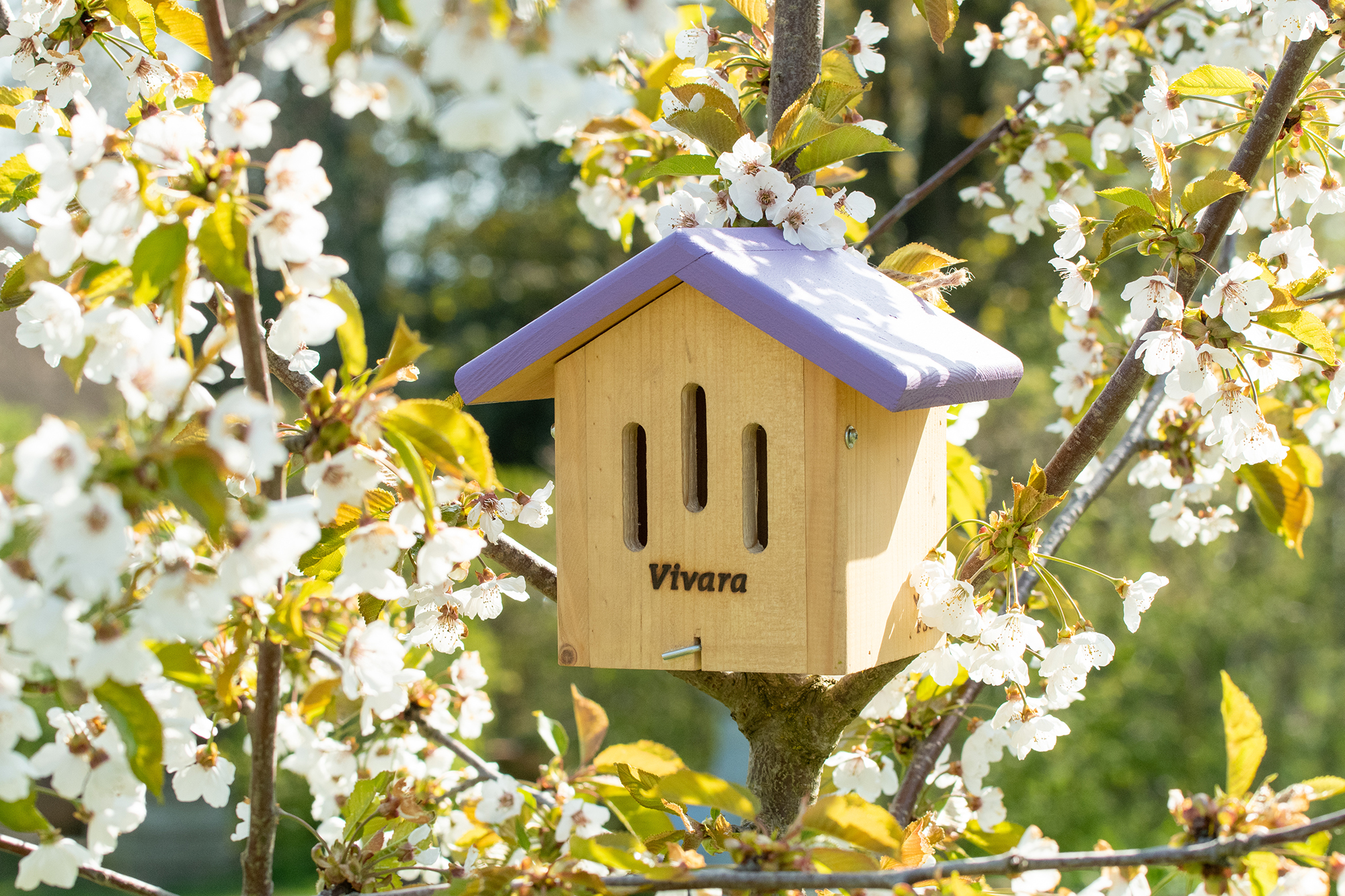
'Place your butterfly house of choice in a sunny spot facing towards the south as this helps butterflies to warm up naturally. Hang it from approximately 1.5 metres and place it near nectar-rich flowers to attract them to the house. You can even make your butterfly house extra inviting by placing a few twigs upright inside the habitat to provide something for butterflies to cling to and rest.'
Adding a butterfly house is a great way to attract butterflies to your garden. Consider incorporating a butterfly house when you learn how to make a bug hotel or install a ready-made design straight into your garden.
Planting for butterflies
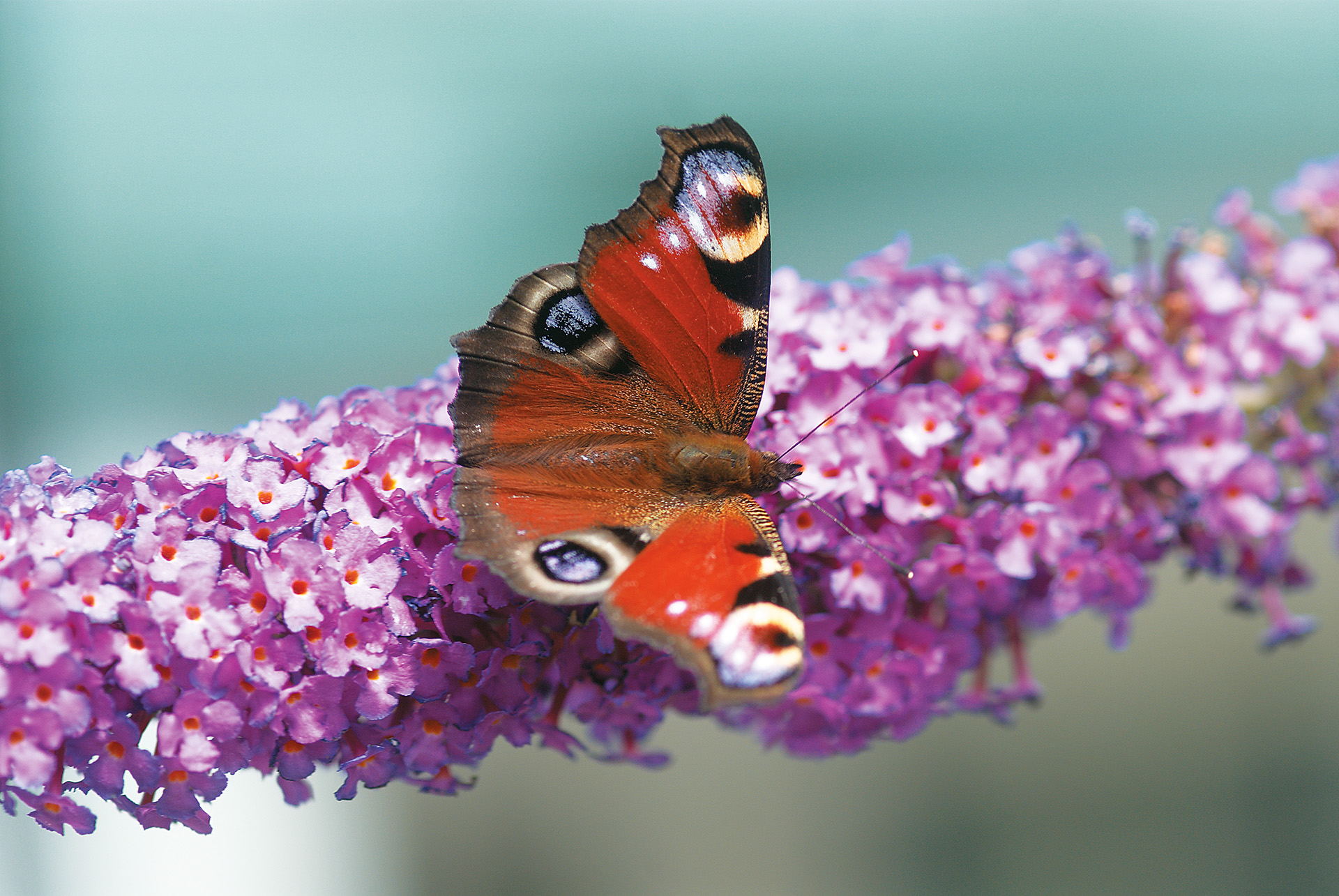
When designing a garden for pollinators it is important to remember that different pollinators require different shapes of flowers and some will only visits to feed on particular blooms and plants.
In general, however, the best plants for a butterfly garden tend to be single, open flowers, such as old-fashioned cottage garden plants, are best to give easy access, and ideally planted in drifts and placed in a sunny, sheltered spot.
Pollinators don't like double, multi-petalled and highly hybridized flowers as they may lack pollen and nectar and be difficult to access.
'Years of selection for increasingly showy blooms has resulted in flowers losing their attraction to pollinators, but there are plenty of traditional, cottage garden plants which are tip-top as far as these insects are concerned,' explains plantswoman Sarah Raven.
You should also consider flowers that attract bees as there is a lot of overlap between the favorite plants of each species. Like bees, butterflies like to stick their long tongue into tubular flowers and take nectar from a variety of colorful blooms, both native and non-native.
When considering how to attract butterflies, it is important to ensure that you have lots of different flowers available for our winged friends.
'There are some flowers which are so deep that they are much more accessible to butterflies and moths with longer tongues, such as phlox and dianthus. It is a good idea to plant a range of plants with different shapes that flower through the year,' explains Anthony McCluskey, project officer from Butterfly Conservation.
'Butterfly borders can provide lots of food for other types of insects, like bees and hoverflies, too, so they will go a long way to helping local populations of other pollinators,' he adds.
Also plant for caterpillars
When it comes to spring, butterflies start to hunt for the perfect place to lay their eggs. Having favourable habitats in your garden is a great way to attract butterflies.
'Many adult moths and some butterflies can be catered for in gardens by providing plenty of plants for pollinators, while their caterpillars have more specific requirements. If you have space for a mixed grass meadow or a large patch of nettles in a sunny position you may be lucky and some species of butterfly may lay eggs,' recommends Dr Andrew Salisbury, Principal Entomologist with the RHS.
While many of us might view nettles as an unwanted and potentially dangerous weed, it is in fact a lifeline for many butterflies and moths. 'Without nettles the peacock, red admiral, and comma butterflies would only be occasional visitors in our gardens both in the UK and US,' explains experts at the Northumberland National Park.
Learn how to plant a wildflower meadow and consider not pulling out all the nettles you spot until after the caterpillars will have moved on.
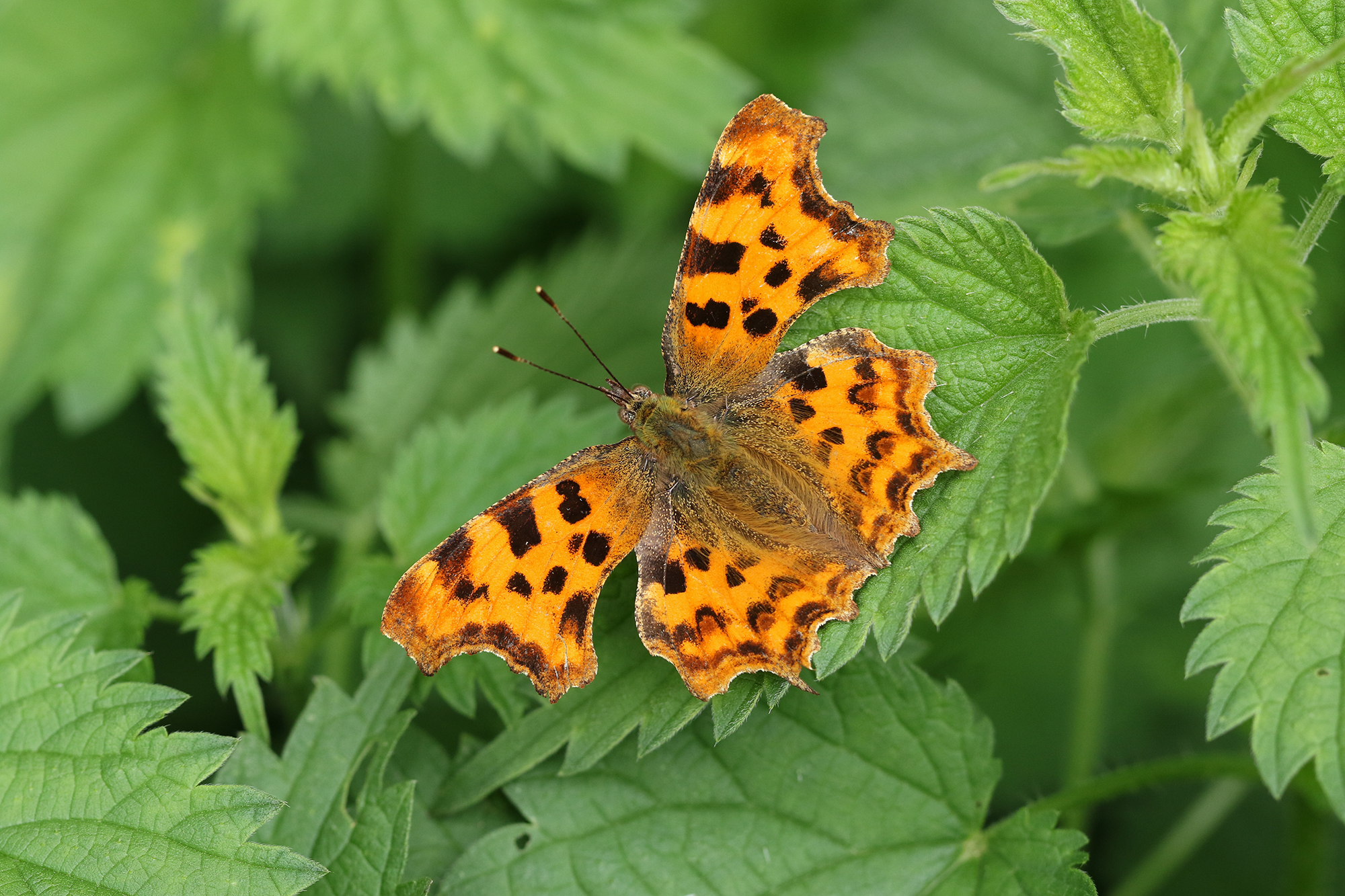
What can you put out to attract butterflies?
Although summer sees the highest number of insect pollinators, they are around through most of the year, so need reliable food sources each season.
In winter: 'Butterflies and bees hibernate in winter, so don't need to forage when it is truly cold, but it is good to think of having a food source in your garden from March to November and at least a few winter-flowering plants that can be used by bees on some warmer, sunny days in spring and autumn,' explains Sarah Raven.
Sarah's choices from November to February include chaenomeles, Clematis cirrhosa, eranthis, or winter aconites, Lonicera x purpusii, winter-flowering mahonias, such as 'Charity', and Viburnum tinud.
In spring: Adding spring choices, such as primrose, bugle and forget-me-nots extends the supply of nectar.
In March, Sarah counsels to include crocus, Erica carnea, primrose and polyanthus, pulmonaria, rosemary, single snowdrops, violets and willow.
In autumn: Autumn options of aster, scabious and verbena, also extend the supply of nectar so valuable for providing butterflies with the energy to fly and mate.
Year round: Some perfect choices for a range of pollinators throughout the year include ornamental and fruit tree blossoms, primulas, violents, muscari, chives, geraniums, achillea, umbels, nepeta, salvias, Japanese anemones, autumn crocusesm rudbeckias, dahlias, hellebores and sarcococca.
Lavenders, particularly Lavandula x intermedia, attract a wide range of insects and, compared with borage, lots of butterflies and hoverflies as well as relatively more bumblebees to honeybees, advises Sarah.
'Flowering shrubs and trees are incredible pollen and nectar providers. Ivy, too, if given the chance to mature and flower, is a tremendous late source of nectar and pollen, supporting a huge range of flies, bees, wasps and other insects,' says Helen Bostock from the RHS.
And, while it may sound unconventional, you can also make a butterfly cocktail for wildlife from old beer and rum. Though this may sound unusual, the drink is loved by experts, and it's fun to make, too.
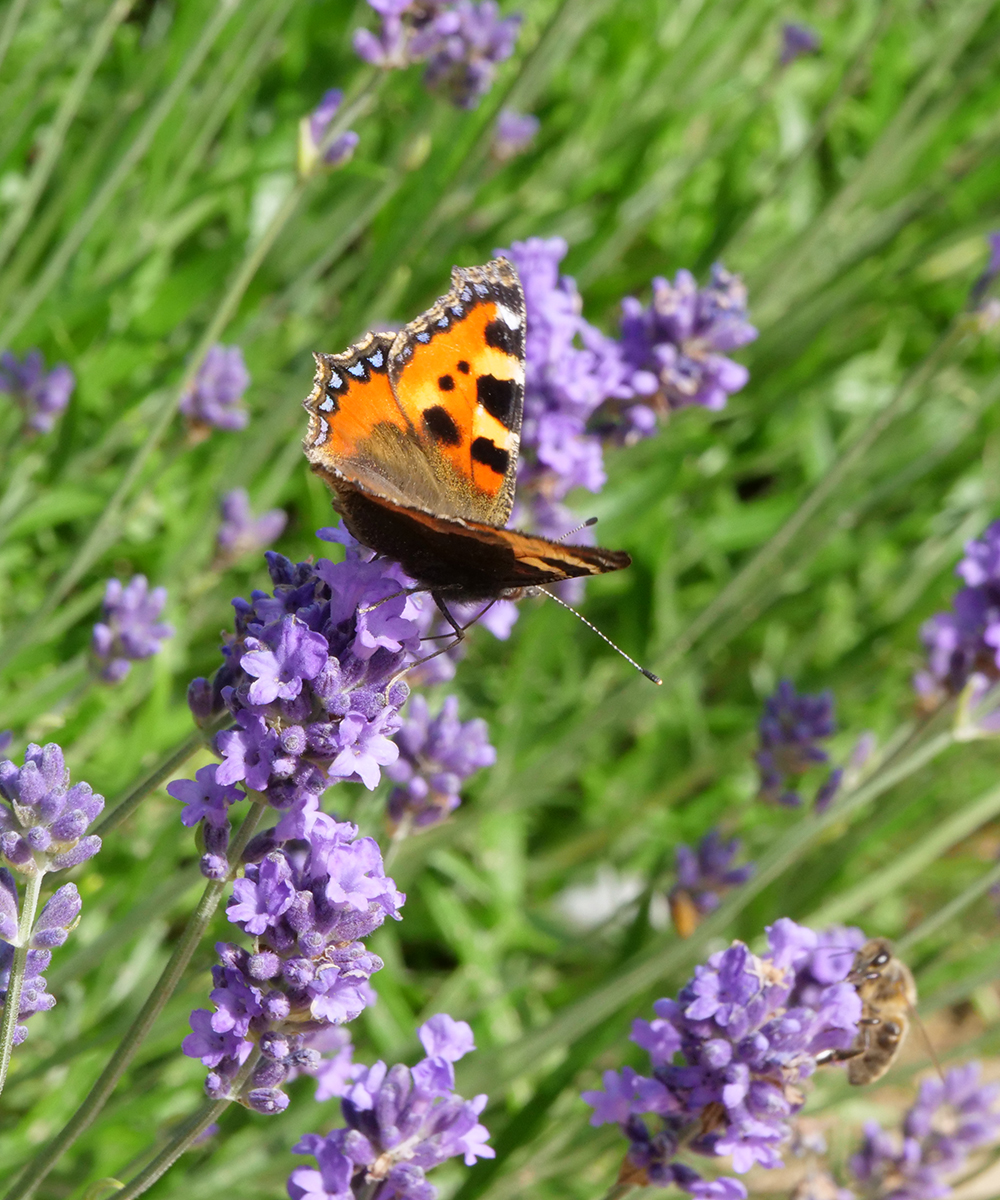
What to do if you see a tired butterfly?
Sometimes you might spot a tired looking butterfly lying on a path or patio. Flying is hard work, especially in the heat of the day. Thankfully, we can help them on their way. 'If you come across a butterfly who appears tired during the spring and summer, the best thing to do is to provide nectar-rich plants nearby to encourage it to refuel. If the butterfly doesn’t move onto the plant itself after a while, you can very gently move it to the flower to encourage it to feed. Ensure there is a butterfly house nearby as well so that it has somewhere safe to rest and recharge,' says Sarah Hancocks.
How do I attract butterflies?
The best way to attract and keep butterflies coming back, other than planting things butterflies love is to avoid using pesticides or herbicides, especially on flowers, as they can kill pollinators and also enter the food chain. Rewilding and organic gardening without chemicals will help all butterflies and other insects in your garden, and also promote an increase in beneficial insects.
Think of the needs of butterflies and other pollinators through the different stages of their life and provide food, water and sheltered habitats:
- Let some areas of your garden be untidy – long grass, leaf piles and plant debris are more important hibernation habitats for many butterflies and moths;
- Do not mow areas of grass, or cut the lawn less often – dandelions and clover are a great source of nectar;
- Leave some weeds – many native weeds have evolved to fit with the breeding and feeding of native pollinators, giving shelter and safe nesting sites to lay their eggs;
- Make a stumpery or learn how to make a bug hotel in a quite corner of the garden;
- Give some thought to supplying larval food, often wild plants, as some pollinators need host plants to develop to adult stage, such as a patch of nettles for many varieties of moths and butterflies may not breed in our gardens, as we can't replicate the specific conditions in the wild, but our gardens are crucial to complement their native habitats and help maintain pollinator numbers.
What color best attracts butterflies?
Pink, purple, mauve or blue colors best attract butterflies. This is because these colored flowers are those that produce the most nectar.
However, this is not a hard and fast rule. The colors preferred by butterflies can vary between the species, especially if they also lay their eggs on the flowers. 'Overall, though, there is no strong preference for flowers of any particular color, so any and all garden color schemes are useful for them,' adds Anthony McCluskey.
His top five plant choices include:
- Heather for the first butterflies in early spring;
- Nasturtium to feed caterpillars of white butterflies;
- Eupatorium for late summer;
- Thyme for pots and window boxes;
- Fruit trees with flowers for the butterflies;
- Leaves for moth caterpillars.
What do you put in a butterfly feeder?
The best things to put in butterfly feeders are probably things you already have at home. To start: if your butterfly feeder is in a color that attracts butterflies you will have a better chance that they will visit, so think pink, purple or blue – or other bright colors that mimic native flowers.
What to feed butterflies with? Butterflies love nectar, but in place of that, put out overripe, mashed fruit, such as bananas, pears, oranges, melons, plums, berries and pineapple. Add water to the mashed fruits to make them easier for the butterflies, or put out clean, fresh water daily in a shallow dish with pebbles in so that butterflies can drink safely.
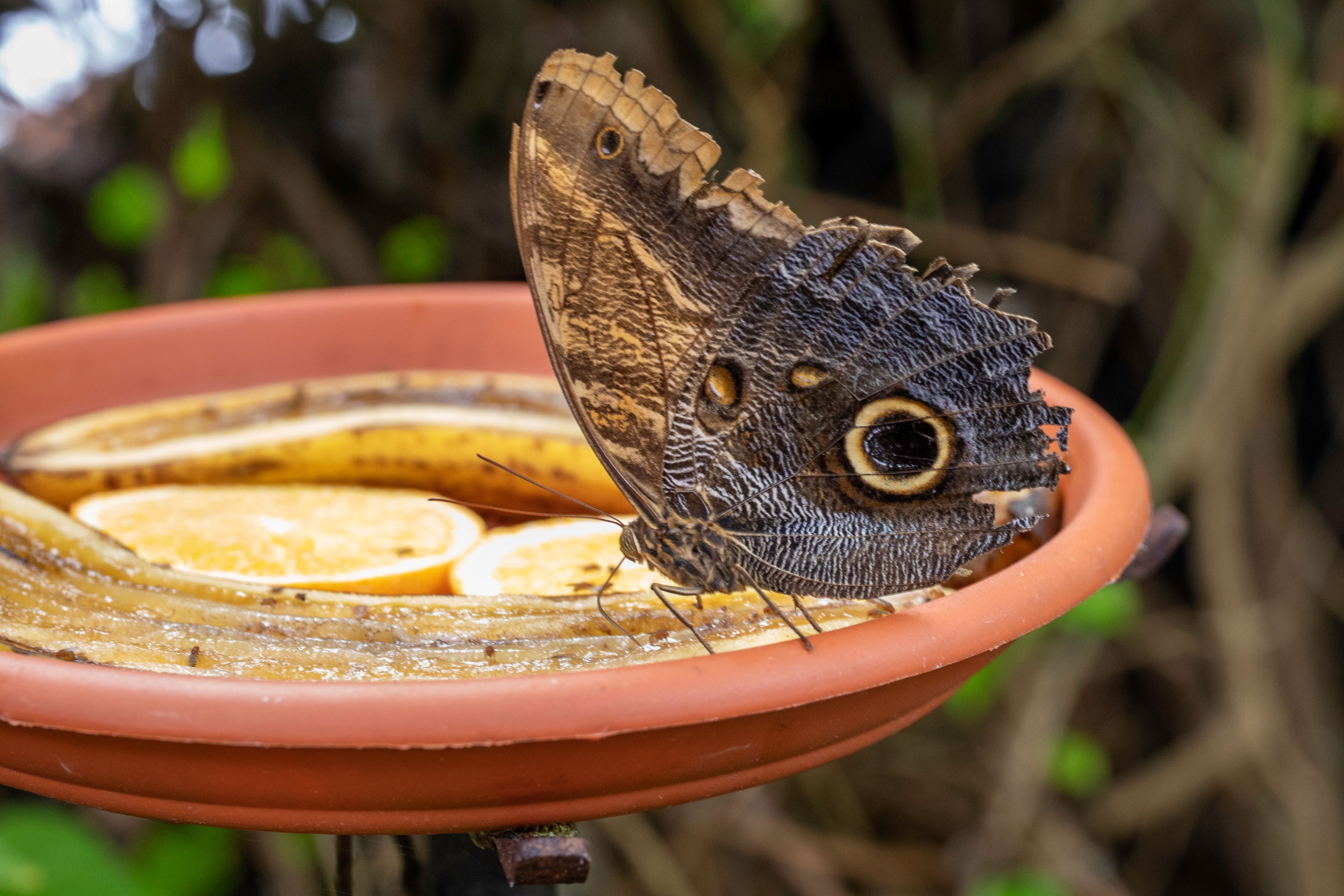
Design expertise in your inbox – from inspiring decorating ideas and beautiful celebrity homes to practical gardening advice and shopping round-ups.

Leigh Clapp is a professional photographer with over 25 years experience, primarily as a garden specialist photojournalist but also with food and travel. She delights in exploring gardens, discovering the tiny elements to their overall essence and meeting lots of enthusiastic gardeners along the way. Leigh’s work appears in magazines, newspapers and books, both in the UK and abroad, including Period Living, Country Life, and Gardens Illustrated; as well as being sole photographer for a number of books, including Garden Details, Feng Shui in the Garden, Vertical Gardens and From the Garden – fresh seasonal cooking.
- Holly ReaneyContent Editor and Sub-editor